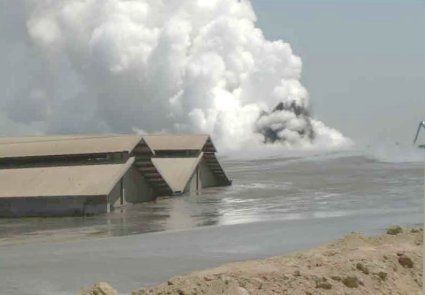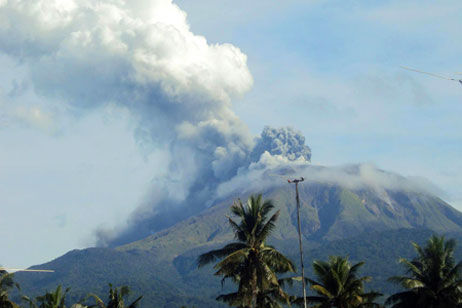
© n/a
Since it roared to life in May 2006, a mud volcano near Indonesia's coastal city of Sidoarjo has swallowed homes, rice paddies, factories, and roads, killing 15 people, displacing 40,000, and harming the livelihoods of many more. As the ongoing eruption nears its 5th anniversary, observers wonder whether it will ever stop. The answer: Not anytime soon. A new study predicts the volcano will continue spewing significant amounts of mud for another 2 decades. A second study forecasts that it could grind on as long as 87 years.
The mud volcano has inflicted a punishing blow to the region of Java island 700 kilometers east of the capital, Jakarta. Nicknamed Lusi, a contraction of lumpur (Indonesian for mud) and Sidoarjo, the volcano has so far disgorged 144 million cubic meters of mud, some of which now covers an area roughly twice the size of New York City's Central Park. Much of the mud has been diverted to a nearby river, where it has formed a new 83 hectare island and extended a natural delta. Compensation and mitigation have cost at least $767 million, according to Humanitas, a nongovernmental organization in Melbourne, Australia, that is studying the disaster's social impact. That is a fraction of the real economic toll, which is still being tallied.
Lusi may be a harbinger of disasters to come. "Like a volcanic eruption, a mud eruption is just the effect of geological activity, and I'm sure in the future another mud volcano must erupt in this region," says Soffian Hadi Djojopranoto, a geologist with the Sidoarjo Mudflow Mitigation Agency. "We need very serious research to understand this phenomenon."
